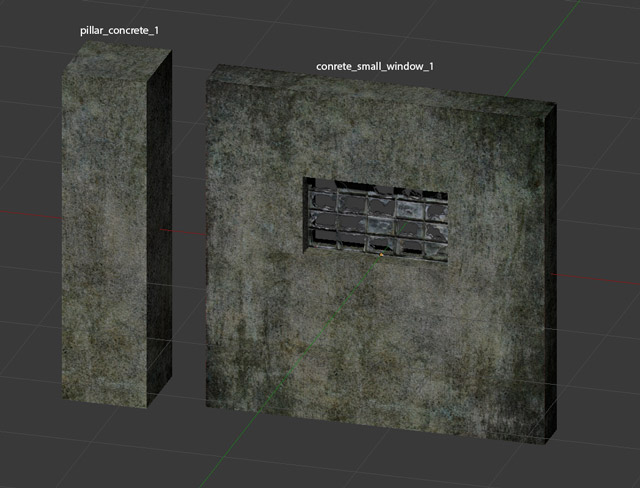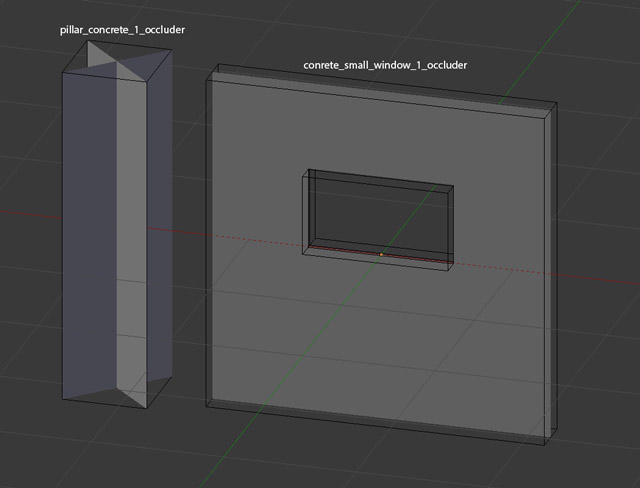| Occluders |
The content pipeline supports occluders for Occlusion Culling.
Occluders ("occlusion proxies") are lightweight triangle meshes that are only used during occlusion culling (see Occlusion Culling). Occluders can be authored in any 3D modeling tool. Occluders are simply meshes without any special properties (no material required). These meshes need to have the string "occluder" or "occlusion" in the name. This tells the content processor that the geometry is not meant to be rendered at runtime. It will only be used during occlusion culling.
Large static objects, such as walls, pillars, buildings, hills, mountains, etc., are obvious candidates for occluders.
Example: The following screenshots show two models and the corresponding occluders.


Occluders can be stored as part of a model or in a separate model file (e.g. FBX file). The model processor will automatically recognize occluders by their name.
In general, it is recommended to store occluders as part of a model (mesh + occluder). This reduces the number of files and reduces the number of scene nodes created at runtime. When an occluder directly corresponds to a model, as in the screenshots above, it should be linked ("parented") to that model in the 3D modeling tool.
The content processor will recognize this link when importing the model: When an occluder (child) is linked to a mesh (parent), the occluder will be stored as a part of the mesh (property MeshOccluder). Otherwise, if the occluder is not linked to any mesh, a separate OccluderNode will be added to the scene.